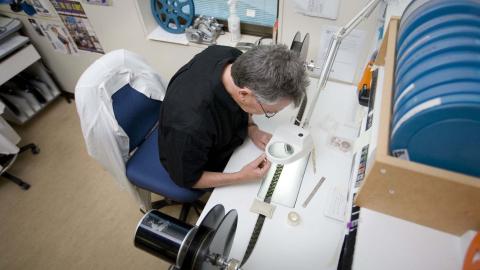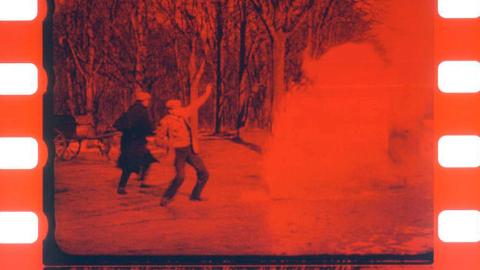

‘Mama don’t take my Kodachrome away’
It was back in 1973 that Paul Simon immortalised colour photography in this song, but if he saw the writing on the wall, it was a long time coming. The last ever roll of 35mm roll of Kodachrome film will be processed, at Dwayne’s Photofinishing Lab in Kansas City, in December this year. Manufacture of the film stock was discontinued some time ago.
Kodachrome, a positive ‘reversal’ process that produced a direct positive image on the camera original, was one of the first successful colour processes, dating back to 1936, before Technicolor was perfected. It turned out to be most favoured in the colour slide stills market. The rich, contrasty saturated colours became a hallmark of National Geographic photographs. In the 1960s amateur photographers turned from black and white roll film, with its tiny paper prints to 35mm colour transparencies, and Kodachrome, with the convenience of a pre-paid mailing envelope was the way they did it. You just dropped the exposed film in the mailbox and got your box of slides back a week later.
For the professional moving image business, Kodachrome wasn’t so successful. Although Technicolor experimented with Kodachrome techniques very early on, the cost was prohibitive, and they eventually adopted an entirely different process, although it was one that also produced characteristically rich colours: just think of The Wizard of Oz. Kodak persisted, and manufactured their film in all gauges for stills and motion picture alike. Only one feature, Lassie Come Home (1943) was ever shot in Kodachrome (albeit a version modified for printing by Technicolor), and the most celebrated professional 16mm film in Kodachrome was of Queen Elizabeth’s coronation.
Another problem was the processing. Unlike modern negative and print processes, and even other reversal processes, Kodachrome used a remarkably complex process with multiple stages of development and re-exposure, and the colour dyes were added at the time of processing instead of being incorporated into the emulsion during manufacture. No wonder you generally had to send film back to Kodak themselves for processing! In its heyday there was a processing line at Kodak’s Melbourne plant, but no other Australian company ever offered the service.
The arrival of good quality colour negative stocks and inexpensive stills paper prints spelt the end of Kodachrome’s supremacy in the consumer market many years ago, around the time of Paul Simon’s song. But it is digital photography that has eroded 35mm’s base much further, to the point where even die-hard professional stills photographers and keen 8mm amateur filmmakers were not enough for Kodak to keep Kodachrome alive.
Apart from bright colours, Kodachrome has one more thing in common with Technicolor: its dyes are remarkably stable. Film is known to last for a century or more under ideal storage conditions (colder temperatures, controlled humidity and so on). Kodachrome colour slides are still the same colour as when they were shot. But although black and white film, processed correctly, doesn’t fade, and modern colour films last well, colour prints from the 1960s and 70s – both stills on paper and the motion picture prints used in projection – very often turn out to have faded badly, leaving not much colour at all except for a flat brownish tinge. It’s a significant problem for film and photographic archives, solved only by good storage conditions, and copying original film components onto modern stocks.
It’s ironic in a way: ‘film is forever’, argue aficionados and archivists alike. But Kodachrome, the most long-lasting and most distinctive of film processes is the one that has now moved into the Never-Never.
The National Film and Sound Archive of Australia acknowledges Australia’s Aboriginal and Torres Strait Islander peoples as the Traditional Custodians of the land on which we work and live and gives respect to their Elders both past and present.


